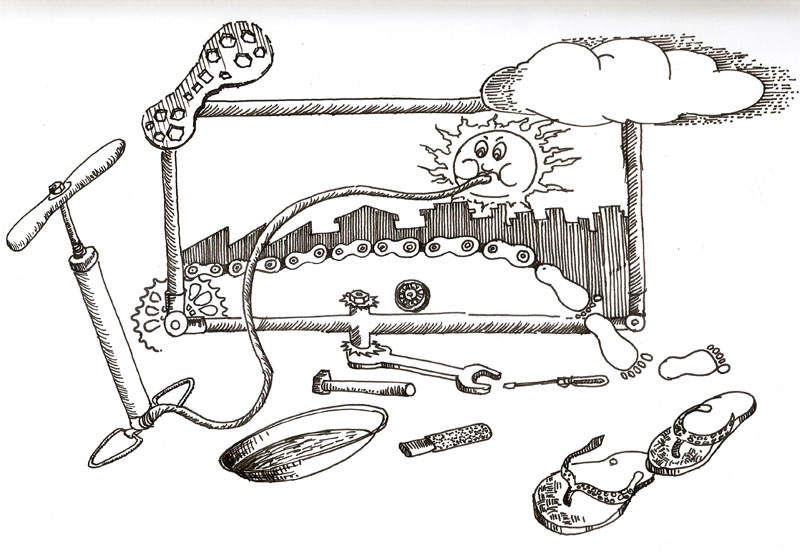Bhagwati Prasad





Grant Period: Over one year and three months
Bhagwati Prasad is a Delhi based artist-researcher who has worked in graphics, performance, sculpture and video. Mostly working with the SARAI group at CSDS and Raqs Media Collective, he has performed at various venues in Delhi, Bangalore, Mumbai, Shanghai, Vienna and Paris for a range of projects. As a graphic artist he has two book length works under his name – Tinker.Soldier.Tap (2009) and The Water Cookbook (2010). He created a mixed media installation with video, drawing, installations, sculpture and performance during his three-month residency at AIR Antwerp, Belgium (2013). Bhagwati Prasad represents a fresh new style of graphic storytelling from an approach that aims to engage with questions of labour, machinery and work.
In his current project tentatively titled Auzaron ki Chuppi aur Kolahal (Silence and Clamour of Tools) he attempts to look at the history of Delhi through tools used in the everyday lives of the large migrant labour population that helps build the city but often remains unseen in the process. Through this journey he is also looking at the transformation and growth of Delhi. His proposal is illustrated with graphic work providing a glimpse of what is to come. The city has attracted a huge migrant population from the neighbouring states, a trend that is still continuing. According to Bhagwati, the volume of this migrant population has not made the city crowded and congested but instead has made it grow horizontally in various directions. It has also kept changing the texture of the city continuously. Delhi epitomises the very Indian (and the third world, in extension) idea of Jugaad, contingent solutions via retrofitting and customisations as opposed to mass industrial scale innovations. As an effort to survive in the harsh conditions of the city the workforce has continuously appropriated new techniques and technology. Tools in the hand of the labourers everywhere have been the agents and witness of these transformations over history.
His own history of growing up in a working class family and working with tools in mechanical workshops during his younger years gives him a perspective that is unique. It didn’t only expose him to various kinds of tools but also to physical transformations and rhetoric that comes from such a milieu. The imagery from the working class life and its iconography has a deep influence on his work. He finds there is a disturbing absence of the tools in intellectual consciousness. For him this can be equated to class discrimination in the intellectual thought process. In his experience he has observed an all pervasive presence of tools in human life but there is a great silence about it in the intelligentsia. He seeks to find the reason for this silence and bring the presence of tools back to academic and intellectual discourse to open up possibilities for debates around labour, class and gender via his artistic endeavour. Starting at a very personal level, the project arrives at larger questions about history, political and intellectual consciousness, labour and technology.
He is also interested in the sound of that the tools make and their roles in people’s lives. The performances that he is thinking of will be woven around these ideas. He imagines his audience to come from a very wide spectrum as his work cuts across many sites and classes.
He is planning to travel to various parts of Delhi and neighbouring states to meet and interview the workers and their families. He hopes to collect stories, songs, proverbs, hearsays and even profanities around tools. There are rituals and practices around tools in India. These might give him important insights into history and society. He doesn’t want to create archives or bring social change through this process but hopes to raise some questions about the silence around tools in the social imagination of history and growth. His form does not require a predetermined story line as his material will emerge through his research visits and finally a complex web of representations will take the shape of a graphic novel. This will enable him to tell multiple stories and address various questions that are ingrained in the field.
